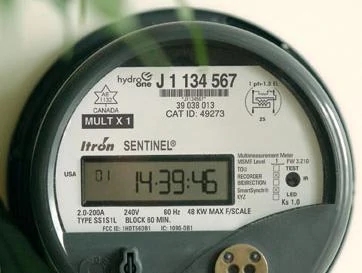Rick Tempchin
Executive Director, Retail Energy Services
Edison Electric Institute
Electric utilities are replacing analog meters with digital “smart” meters across the country, creating improvements in monitoring usage and enabling a two-way communication link between utilities and consumer homes.
The old familiar meter, requiring a meter reader to measure a home’s electricity use every month, is being phased out. A recent survey by the Institute for Electric Efficiency (IEE) found that by September 2011, more than one-in-five homes in the country now have “smart” meters. Based on utility projections, more than half of all households in the nation will be using digital meters by 2015.
Why Smarter is Better
Today’s new digital meter offers opportunities to consumers. The two-way communication capability enables the utilities to automatically measure electricity use, and it also allows consumers to monitor how much electricity they are consuming in real time. More and more homeowners can go online to a utility-provided website 24 hours a day to see how much electricity their home is using. And they can compare their usage day-by-day and week-by-week.
In this way, homeowners have better awareness and more control over how to manage their monthly bills. Studies have shown that awareness of home usage motivates homeowners to take simple steps, such as turning off unnecessary lights or adjust thermostats in an effort to use electricity more efficiently. These actions typically lead to monthly energy savings of around five percent per household.
The digital meter’s two-way communication capability also allows utility companies to respond to power outages quickly and with greater accuracy. Smart meters can alert utilities when a home loses power, even when no one is home. This ability is particularly important for vacation home owners who can be away for long periods. Smart meters allow utilities to get repair trucks on the road quickly, target trouble spots, and fix them. For a utility’s customers, this means more reliable and safer service.
As part of the overall smart electric grid, smart meters provide greater information to utilities from a single home to neighborhoods and across national transmission lines bringing power to urban and rural areas throughout the country. This aspect of the smart grid also has capabilities to detect and repair system problems, potentially averting glitches before even the slightest flicker of a light bulb.
The smart meter, with its interactive capacity, will provide consumers with more reliable service overall, while ensuring fewer and shorter outages when they occur.
Future Gets Smarter
Smart meters will offer benefits for both utilities and homeowners in the not too distant future. Homeowners pay the same price for electricity all day every day. But utilities, like all other businesses, have slow and busy periods.
A heat wave, for example, overburdens utility companies, as consumers run their air conditioners at high levels. To meet demand, electric utilities must have extra power plants standing ready.
If the utility could reduce electricity demand during these peak periods – even by a small amounts – it could save money by not having to build and maintain the additional power plants, which are utilized for a very limited number of hours each year. These savings would translate into lower electricity rates for the utility’s customers.
A smart meter, coupled with a smart grid, allows a utility to reduce its peak period demands. During a peak period, the utility sends a signal to the smart meter. The smart meter, in turn, sends a signal to a smart thermostat in the home. If the homeowner has agreed, the thermostat would cycle the home’s air conditioner on-and-off during the peak demand period. In return for allowing the utility to cycle the air conditioner on-and-off, the homeowner would earn a credit on their electric bill.
A growing number of appliance manufacturers are planning to make their appliances smart by building in a chip that talks to the smart meter directly. Whirlpool, for example, has announced plans to upgrade their appliances by 2015, requiring all of its large-energy consuming appliances to be capable of receiving and responding to signals from a smart meter. Whirlpool customers will have appliances that can be programmed to automatically run during off-peak ours, reducing high-peak energy demands for the utilities, while providing a credit on the customer’s bill.
Another growing consumer area that will be positively impacted by smart meters are plug-in electric vehicles, such as the Chevy Volt and the Nissan LEAF. The smart meter will allow utilities to offer a lower electricity rate during evenings and overnight hours, thus encouraging consumers to charge their car during off-peak periods of the day, reducing demand.
The smart meter is coming. With it, utilities will provide more efficient ways for generating and using electricity. For homeowners and electric utilities, the future has never looked brighter.
For more information about electric utilities and smart meters, please visit EEI’s website, www.eei.org.



